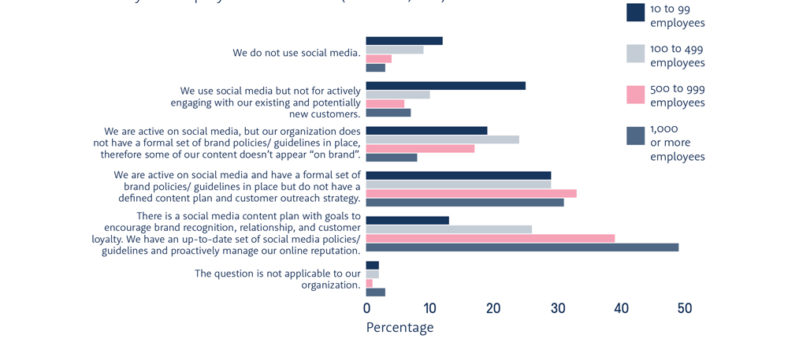 By Stephen Shaw
By Stephen Shaw
When the era of Big Data began in earnest a decade or so ago, marketing automation was suddenly seen by most businesses as indispensable. Gartner even predicted at the time that CMOs would eventually outspend CIOs on technology. And sure enough, technology now accounts for the biggest slice of marketing budgets, greater even than media spending.
Marketing technology has certainly come a long way over the decades, evolving from the standalone CRM systems of yesteryear, to the monolithic enterprise marketing suites of not-so-long-ago, to the cloud-based platform ecosystems of today, when there is an app for just about everything, including apps to connect the apps. What hasn’t kept pace, however, is the technical acumen of marketers, no matter how digitally savvy they may be in their personal lives. Too few organizations have reached the stage of maturity where they are graduating enough marketing technologists to take command of these wobbly “frankenstacks”. And too many marketers are still reliant on their IT staff to do the heavy lifting — the customization work, the application integration, the system connectivity, and so on.
That is probably why marketers struggle to make optimal use of their current platforms, citing complexity as the top challenge. Nowadays most companies have opted for a single vendor solution as their marketing platform of choice, whether that’s Adobe, Salesforce, Oracle, SAS or any one of a dozen other competing systems. But as Forrester observes, these are still made up of “separate components, deployed simultaneously”.
Often these platforms have to be augmented by multiple point solutions, usually in the range of 5 to 20 different add-on applications. And of course, these platforms also need to be tightly connected to various internal “systems of record” which house the source data. The integration of all these various systems has always been a challenge. Recognizing the problem, the major martech vendors are broadening the scope of their platforms, seeking to natively integrate as many 3rd party applications as possible, connected through open APIs. The goal: personalization at scale. And making the integration of these disparate tools even easier are so-called “no code” development platforms that allow even non-technical users to create unifying processes across different applications using “drag and drop” interfaces.
 HubSpot, the inbound marketing platform, is a great example of a hub-and-spoke system, with hundreds of third-party tools from certified partners, helping to make their solution one of the simplest to deploy with minimal involvement by IT for any small to medium-size business. The Executive in charge of the Platform Ecosystem at HubSpot is Scott Brinker, once the co-founder of an interactive content developer called Ion, now best known as the man behind the Chiefmartec.com blog who specializes in demystifying the world of technology for marketers.
HubSpot, the inbound marketing platform, is a great example of a hub-and-spoke system, with hundreds of third-party tools from certified partners, helping to make their solution one of the simplest to deploy with minimal involvement by IT for any small to medium-size business. The Executive in charge of the Platform Ecosystem at HubSpot is Scott Brinker, once the co-founder of an interactive content developer called Ion, now best known as the man behind the Chiefmartec.com blog who specializes in demystifying the world of technology for marketers.
Stephen Shaw: After running your own SaaS company for so long, what made you decide to make HubSpot your new home?
Scott Brinker: One of the recurring themes of my blog has been the growth of all these apps in the martech landscape. I knew that one of the real challenges for marketers was the lack of integration between these apps and the major systems which form the foundation of their martech stack. I felt that companies like HubSpot, Adobe and Oracle should recognize this as an opportunity to build a platform ecosystem and not just try to compete. Then the HubSpot founders actually reached out to me and suggested I put my money where my mouth is and help them make their system more of a true platform.
Shaw: You’ve had your blog for over a decade. What was your motivation for starting it?
Brinker: Prior to starting Ion, I’d spent a number of years with a digital agency that would get hired by marketing to work with the client’s IT team. At the time there was a huge gap between IT and marketing — some people would say hostility between them — but to be honest, they just lived in completely different worlds. They just didn’t understand what each other was trying to do. And so, the idea of the blog was to help marketing collaborate with IT and encourage non-technical marketers to develop more technical capabilities in their organizations. And then I found myself the champion of this new emerging class of marketing technology professional. But the original goal was, how does marketing adapt to a radically new environment?
Shaw: Do you see your audience widening beyond marketing to encompass other areas of the company that share responsibility for the customer experience?
Brinker: That’s very much the trend I see. What’s interesting is the technology is no longer just for marketing — it needs to enable the broader organization.
Shaw: I used to say that most organizations move at the speed of IT. But in this Year of the Plague, we seem to be experiencing a great technology leap forward.
Brinker: The year of the plague? Well said! Oh, my God, I will be so glad when this is behind us. Yeah, absolutely. I think one of the things that’s been really interesting is how quickly an organization can change if they really have to, just to deal with the crazy circumstances they found themselves in. And while I’m sure none of us want to repeat 2020, we have the ability to adapt and change faster than maybe we gave ourselves credit for.
Shaw: On the subject of transformational change, you introduced “Martech’s Law”, where you postulated that technology changes exponentially while organizations change logarithmically. Can you explain that theorem?
Brinker: Imagine a graph with two curves. One shows the rate of technology change which is exponential. It’s like Moore’s Law — computing power more or less doubles every two years or so. That’s an exponential growth curve. The other curve shows how quickly organizations change their processes, their internal structure, their culture, all those things. That changes too, but very slowly. If you take those two curves and juxtapose them, the distance between the two curves just keeps getting wider. They are woefully mismatched.
Shaw: In this past year, did you see a sea change in the willingness of businesses to get ahead of change instead of always chasing it?
Brinker: Yeah, I think it was change or die. The idea that we’re not going to make it through the quarter, much less the year, really forced people to make changes, and they did.
Shaw: When things get back to the “new normal”, will business lose their urgency to invest in the future?
Brinker: Whether it’s another pandemic, a brand new competitor, a new technology, or some other disruptive change, we have to continually invest in new capabilities that will help us adapt faster, whatever the threat may be, not just in a life and death situation.
Shaw: In your original “Martech Landscape” infographic, there were just 150 vendors pictured, I believe. Your latest one has 8,000. Soon, you’re going to need an outdoor billboard to list them all. What accounts for this astounding growth?
Brinker: Twenty years ago, it was really hard to make a go of it in the software business. You’d need a bunch of capital, there were long development cycles, and then you’d have to figure out a go-to-market strategy using all these traditional expensive channels. Fast forward to today and everything’s in the cloud. You’ve got Amazon Web Services, Microsoft Azure, Google Cloud, all of this world class infrastructure that makes software development super cheap. You’ve also got all these open-source toolkits. And so, you have almost zero barriers to entry in the software market. You don’t have to build a billion dollar software company anymore. You just have to find the right niche and you still have a multi-million dollar business. Those kinds of possibilities just weren’t possible in the software space before. But supply is only one part of it. You also have to have a market for it. And there’s been so much opportunity for new software because of how marketers want to engage their audiences. So, all this leads to a very expansive martech landscape.
Shaw: At some point, do you stop expanding a single martech list and just break it into its respective categories?
Brinker: Yeah, you’re reading my mind. I had to hire a team of nine people who spent three months working on our most recent landscape. And I’ll be honest, I don’t know if the effort is worth it. Because let’s face it, it’s a conversation piece. A way to appreciate the scale of this industry. I hope to God nobody is actually using the landscape to throw darts at it to pick technologies. Is there an opportunity to break it into categories? I actually think that would be a much more useful tool for people.
Shaw: And then you have the enterprise marketing suites trying to be all things to all people.
Brinker: Yeah, I think it’s just hard for those companies to cover all of the use cases which is the fundamental reason why I think the platform strategy is the way to go. You do want one unified platform. But from a capability perspective, there’s a lot of specialization you want to support. Look at Shopify — I think they’re a fantastic example of this. Within their app marketplace, I think they’ve got something like 5,000 apps listed.
Shaw: Gartner says that most users are pretty happy with their martech stack, but aren’t taking advantage of its full capabilities. Why do you suppose that is?
Brinker: Utilization is the absolute wrong metric. Because, who cares? What matters are outcomes. If I’m only using 40 percent of the features, was it really a bad choice?
Shaw: There is that expression “frankenstack”, where you’re just adding stuff needlessly and creating all kinds of additional complexity. Forrester says that martech integration is the number one driver of success. Doesn’t that suggest simpler might be better — that less is more?
Brinker: I don’t think this integration problem should be the problem it is, right? If you have to choose between one product where everything works together, but doesn’t do exactly what you want, or you have to buy a whole bunch of products that in theory will do exactly what you want, but you can’t get them to work with each other, that’s a terrible choice. But why can’t it be a platform where you just plug in specialized functionality and get the best of both worlds? Like we talked about with Shopify.
Shaw: In your book, “Hacking Marketing,” written four years ago, you say that complexity is the number one challenge of modern marketing. Do you still think that’s the case today?
Brinker: Yeah. And a big part of the blame for that lies with the martech vendor community. We could be a lot better at making it easier for marketers. I do think the industry is improving, but I also think we’ve got a considerable long way to go. Because the full range of things that marketers can do with software is just infinite. The vendors should be in a position of helping to educate and empower marketers. This is one of the reasons why Salesforce has its Trailhead program, and we have HubSpot Academy, teaching marketers how to harness the value of these tools. That said, there’s this adage called Conway’s Law which says software reflects the team that built it. I believe there’s an inverse to Conway’s Law: very often we get forced into changing our business to match how the software creator thinks we should run it.
Shaw: It’s not just the technology that’s complex: there’s inherent complexity in managing anytime — anywhere interactions with customers. Isn’t that at the heart of this challenge going forward?
Brinker: The past era was about Big Data: How do we get our arms around all this data coming into our organization? The next challenge is going to be what I call Big Ops: How do we manage the operations of the business with all of these different elements running in parallel? The very kinds of software that helped create the problem are also going to be the ways that we get through it. There is going to be another layer of technology that will help us govern and manage these other technologies.
Shaw: Is there a requirement to create a marketing technology office to bridge IT and marketing?
Brinker: Funny, that idea of a marketing technology office is actually why I started my blog. In fact, the blog is called Chief Marketing Technologist because I thought you needed a team to liaise between marketing and IT. I’ve now come to appreciate why there might be good reasons not to do that. Even though I think IT and marketing understand each other much better than they did 10 years ago, their accountabilities are very different. IT has an essential role in providing governance over the technology used throughout the organization. You want to make sure that you’re compliant with data and privacy laws — to make sure that the SLAs [Service Level Agreements] are in place — to do the security reviews so that there are no big gaping holes. And some of these technologies operate across multiple departments. They need to be able to work across marketing, sales, and customer service and connect with ops and finance. And so IT is best positioned to run that common platform. That said, a lot happens in marketing that IT has no need to be involved in. I just don’t think IT wants to be in the business of actually doing marketing and operations work.
Shaw: You talk about a second Golden Age of Martech. What do you mean by that?
Brinker: In the first Golden Age of Martech, you had this explosion of thousands of vendors, with everyone needing to set up a marketing ops team. That era was defined by three dichotomies. Suite or best of breed? You had to make a choice. Then you either had software companies or services companies, but nothing in between. And then the third dichotomy was build versus buy. And to be honest, those three dichotomies have been really painful. In the second Golden Age of Martech, instead of suite versus best of breed, you’ll have a platform as your foundation, and then you’ll augment it as needed with best of breed features that plug right in. I think we already see software companies offering more services and in the other direction services companies offering their own software. And then in the build versus buy decision, again that gets us back to platform ecosystems where you create your own custom apps tailored to the operational flow that is unique to your business. That’s why I think these next 10 years are going to be a pretty amazing time.
Stephen Shaw is the Chief Strategy Officer of Kenna, a marketing solutions provider specializing in delivering a more unified customer experience. Stephen can be reached via e-mail at sshaw@kenna.ca




